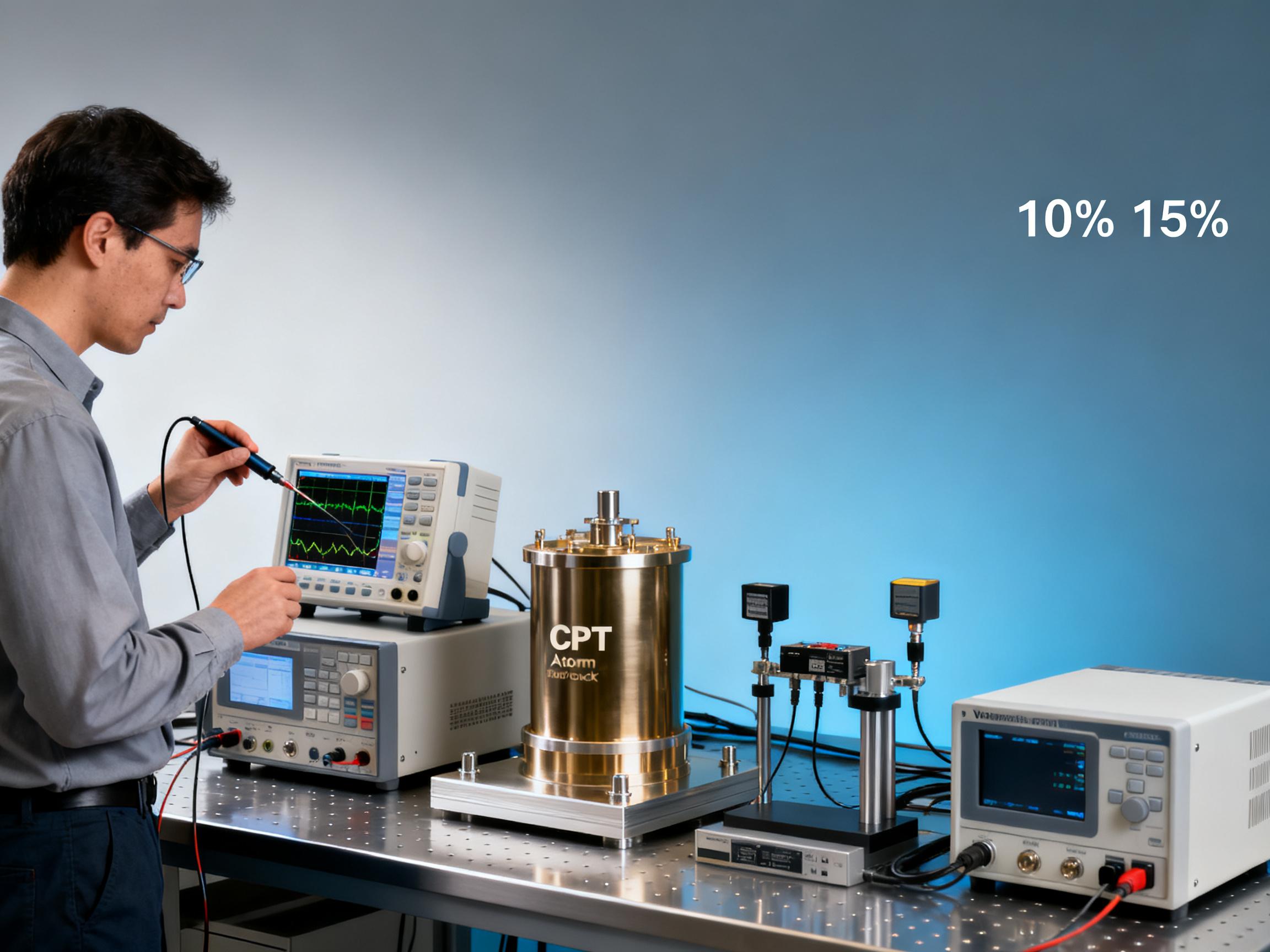RELATED
![How CPT Atomic Clocks Reduce OPEX in 5G Base Stations [Real Data] How CPT Atomic Clocks Reduce OPEX in 5G Base Stations [Real Data]](https://usimg.bjyyb.net/grey.png?x-oss-process=image/resize,m_fixed,w_800,h_600,limit_0) How CPT Atomic Clocks Reduce OPEX in 5G Base Stations [Real Data]2025-12-11
How CPT Atomic Clocks Reduce OPEX in 5G Base Stations [Real Data]2025-12-11 2024 CPT Atomic Clock vs Rubidium: Which Offers Better Stability for Telecom Networks?2025-12-08
2024 CPT Atomic Clock vs Rubidium: Which Offers Better Stability for Telecom Networks?2025-12-08 Live Demo Results: CPT Atomic Clock Performance Under Harsh Environmental Tests (Data Inside)2025-12-05
Live Demo Results: CPT Atomic Clock Performance Under Harsh Environmental Tests (Data Inside)2025-12-05 Budgeting for Precision: Total Cost of Ownership for a Rubidium Atomic Clock Over 5 Years2025-12-03
Budgeting for Precision: Total Cost of Ownership for a Rubidium Atomic Clock Over 5 Years2025-12-03
MESSAGE
The multifunctional protection module plays a vital role in safety protection in missile-borne power module. Different protection functions have their own working principles and cooperate with each other to ensure the stable operation of missile-borne power system. The following is a detailed introduction:
1. Working Principle Of Overvoltage Protection:
Voltage Detection:
Multifunctional protection modules usually use voltage sensors (such as voltage divider resistor network, voltage transformer, etc.) to monitor the input or output voltage of missile-borne power module in real time. These sensors convert high voltage into low voltage signals suitable for processing by the internal circuit of the protection module. For example, the input high voltage is proportionally reduced by the voltage divider resistor network, and then the reduced voltage signal is transmitted to the subsequent signal processing circuit.
Comparison Judgment:
The signal processing circuit compares the detected voltage signal with the preset overvoltage threshold. This threshold is determined according to the safe working voltage range of the missile-borne equipment and the performance parameters of the power module. The comparator will determine whether the detection voltage exceeds the threshold, and if so, it will output a trigger signal.
Protection Action:
When the trigger signal is received, the protection execution circuit will take corresponding actions. Common action modes include controlling the switch tube (such as MOSFET, IGBT, etc.) to cut off the power input or output, or reducing the output voltage by adjusting the circuit. For example, the gate voltage of the MOSFET is controlled to cut off, thereby cutting off the power output to prevent excessive voltage from damaging the missile-borne equipment.
2. Working Principle Of Overcurrent Protection:
Current detection:
Use current sensors (such as Hall current sensors, sampling resistors, etc.) to measure the output current of the power module. The sampling resistor converts the current into a voltage signal, and the Hall current sensor obtains current information by detecting changes in the magnetic field. These current signals are transmitted to the signal processing part of the protection module.
Signal Processing And Judgment:
The signal processing circuit amplifies and filters the current signal, and then compares it with the set overcurrent threshold. The setting of the overcurrent threshold takes into account the rated current of the power module and the normal working current range of the missile-borne equipment. If the detected current exceeds the threshold, the comparator outputs a trigger signal.
Protection Execution:
The protection execution circuit takes measures according to the trigger signal. It may be to cut off the power output by controlling the switch tube, or to adopt current limiting measures, such as adjusting the duty cycle of the switching power supply, so that the output current is reduced to a safe range. For example, in some switching power supplies, when overcurrent is detected, the on-time of the switch tube is adjusted by controlling the chip to reduce the output current.
3. Working Principle Of Short-Circuit Protection:
Short-Circuit Detection:
Determine whether a short circuit occurs by detecting the voltage and current changes at the output end of the power supply. When the output end is short-circuited, the current will increase sharply and the voltage will drop rapidly. The protection module uses fast-response current and voltage detection circuits to capture these changes. For example, a high-speed comparator and sampling circuit are used to monitor the rate of change of the output voltage and current in real time.
Judgment And Triggering:
Once the current is detected to increase suddenly and the voltage drops rapidly to a certain extent, it is judged that a short circuit occurs and the protection circuit is triggered immediately. The triggering speed of short-circuit protection is very fast, usually in microseconds, to avoid serious damage to the power supply and equipment caused by the short-circuit current.
Protection Action:
The protection execution circuit quickly cuts off the power output, usually by controlling the high-speed switch tube to turn off instantly to prevent the continuous flow of short-circuit current. At the same time, some protection modules will also send out short-circuit fault indication signals so that the problem can be quickly located in subsequent maintenance.
4. Working principle of over-temperature protection:
Temperature Detection:
Use temperature sensors (such as thermistors, thermocouples, etc.) to monitor the temperature of the power module. The resistance of thermistors changes with temperature, and thermocouples generate temperature-related thermoelectric potential. These temperature signals are transmitted to the signal processing circuit of the protection module.
Signal Processing And Comparison:
The signal processing circuit amplifies, converts, and processes the temperature signal, and then compares it with the set over-temperature threshold. The over-temperature threshold is determined based on the heat dissipation capacity of the power module and the tolerance temperature of the components. When the detected temperature exceeds the threshold, the comparator outputs a trigger signal.
Protection Action:
The protection execution circuit takes measures based on the trigger signal. It may be to reduce the output power of the power module, for example, by adjusting the operating frequency or duty cycle of the switching power supply to reduce the heating of the module; or directly cut off the power output to prevent the temperature from continuing to rise and causing permanent damage to the module. At the same time, some protection modules will automatically restore power supply after the temperature drops to a safe range.
5. Working Principle Of Undervoltage Protection:
Voltage Monitoring:
Similar to overvoltage protection, the input voltage of the power module is monitored in real time through a voltage sensor. The detected voltage signal is transmitted to the signal processing circuit for processing.
Comparison Judgment:
The signal processing circuit compares the detected voltage signal with the set undervoltage threshold. The undervoltage threshold is determined based on the minimum voltage at which the missile-borne equipment can work normally. If the detection voltage is lower than the threshold, the comparator outputs a trigger signal.
Protection Action:
After receiving the trigger signal, the protection execution circuit cuts off the power output to prevent the missile-borne equipment from working abnormally due to too low input voltage, such as chip logic errors, equipment failure to start, etc. After the input voltage returns to the normal range, the protection module can automatically or manually restore power supply according to the set conditions.
6. Working Principle Of Reverse Connection Protection:
Polarity Detection:
The polarity of the power input is detected by a circuit composed of components such as diodes and MOSFETs. For example, by using the unidirectional conductivity of the diode, when the power polarity is correct, the diode is turned on and the power input is normal; when the power polarity is reversed, the diode is cut off to prevent the current from flowing in the reverse direction.
Protection Execution:
If the power polarity is detected to be reversed, the protection circuit will take measures to prevent the reverse current from damaging the power module and other devices. In addition to using the unidirectional conduction characteristics of the diode, the power input can also be cut off by controlling the gate voltage of the MOSFET to ensure the safety of the circuit. In some designs, when the power polarity is restored to the correct state, the protection module can automatically resume normal operation.
CONTACT US
Please use the form below to get in touch.
If you need a reply we will get in touch as soon as possible.

![How CPT Atomic Clocks Reduce OPEX in 5G Base Stations [Real Data] How CPT Atomic Clocks Reduce OPEX in 5G Base Stations [Real Data]](https://usimg.bjyyb.net/sites/91500/91958/1765179857856560163985903616.jpeg)



